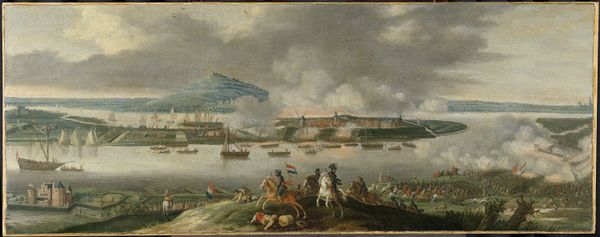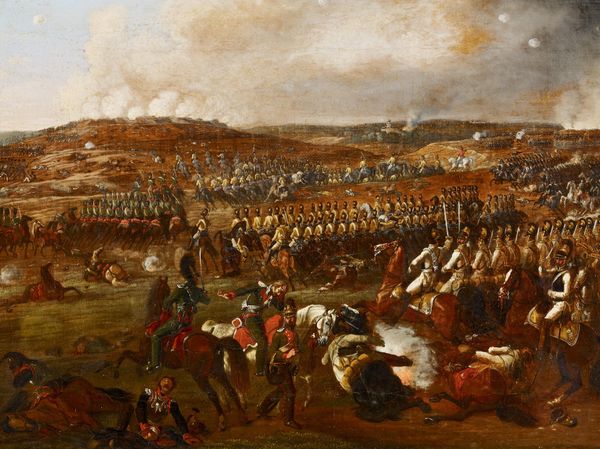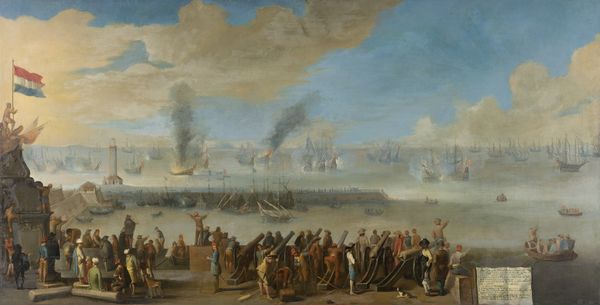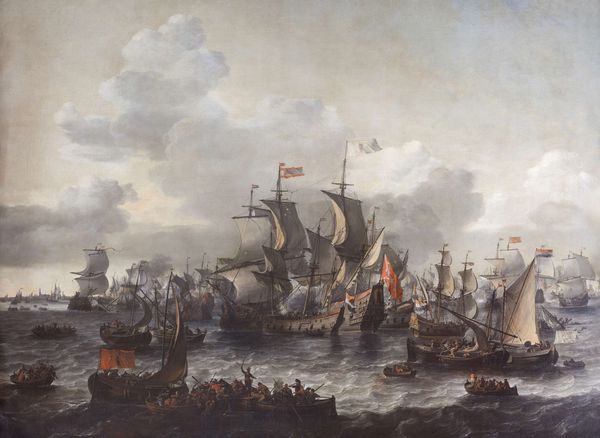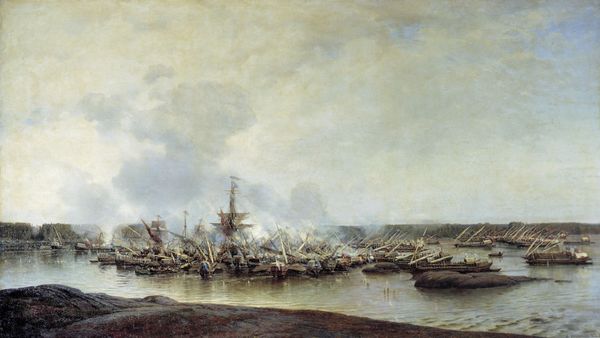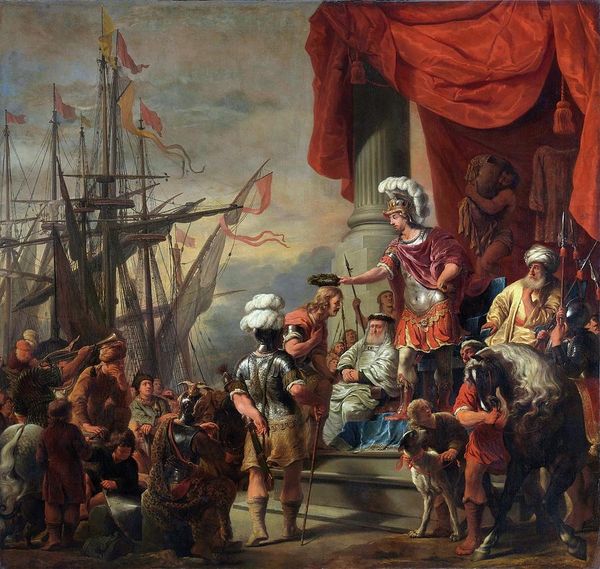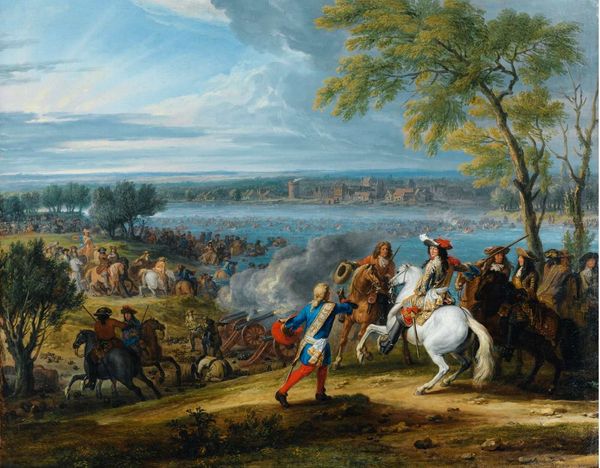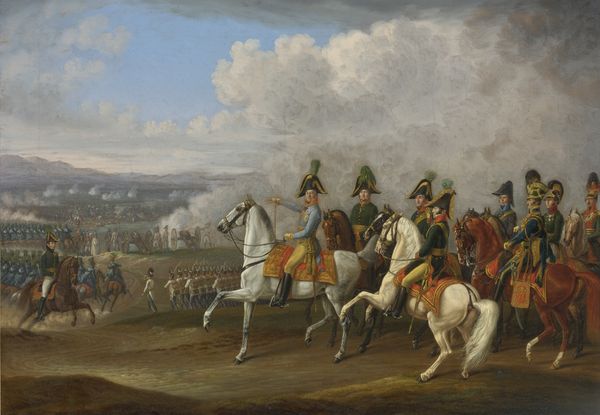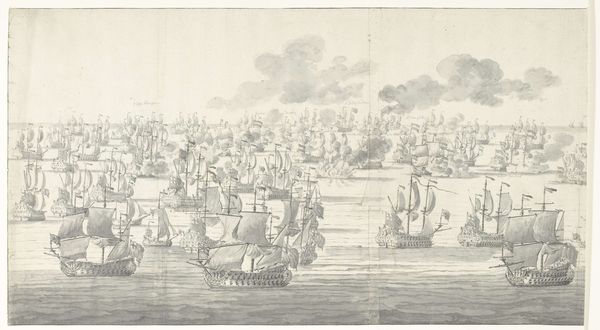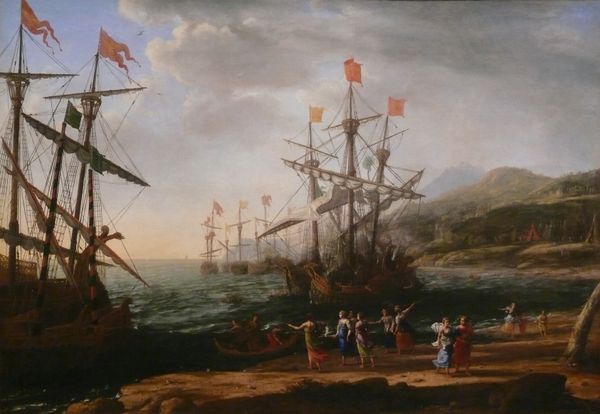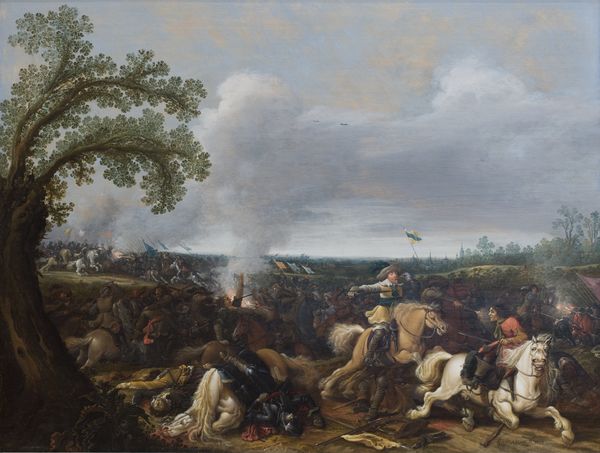
painting, oil-paint
#
neoclacissism
#
narrative-art
#
painting
#
oil-paint
#
landscape
#
oil painting
#
genre-painting
#
history-painting
#
academic-art
Dimensions: overall: 70.1 x 92.6 cm (27 5/8 x 36 7/16 in.) framed: 82.6 x 104.8 x 6.4 cm (32 1/2 x 41 1/4 x 2 1/2 in.)
Copyright: National Gallery of Art: CC0 1.0
Curator: Standing before us is Frederick Kemmelmeyer’s painting, "First Landing of Christopher Columbus," rendered in oil paints between 1800 and 1805. It is clearly an exercise in the then-popular style of neoclassicism, though tinged with the influence of genre painting too. Editor: My immediate impression is one of staged drama. The contrast between the brightly dressed Europeans and the more muted tones of the Indigenous figures strikes me as deliberately crafted to emphasize power dynamics. Curator: Indeed. The image resonates with established symbols. The ships, for example, represent not just travel but also dominance, while the cross held aloft signifies the intention of cultural conversion, carrying heavy implications that touch upon both spiritual belief and imposed social order. Editor: The artist is certainly engaging with a historical narrative, but I'm wary of the uncritical glorification. The positioning of Columbus, gesturing forward with a kind of possessive energy, is deeply unsettling when considered against the backdrop of colonialism's devastating consequences. He becomes an avatar of subjugation in that posture. Curator: I recognize your unease. Kemmelmeyer presents an image where specific cultural memories are validated through European eyes. However, if we consider the Indigenous figures, they stand united yet cautiously, almost like a defensive bulwark – a silent language against encroaching forces. Their visual unity represents communal resilience. Editor: It’s a fascinating contrast. While Columbus seems to claim the land, the Indigenous population appears to observe with guarded apprehension. I read it as a pictorial struggle for control over narrative, territory, and destiny itself. It brings to the surface that, still now, cultural contact continues to impact us. Curator: Your point hits at something essential. This piece does more than narrate history. It invites a dialogue on the clash of civilizations. Every color, every gesture echoes louder than the events, reaching into how we frame historical reflection itself. Editor: Absolutely. Ultimately, examining this image means engaging with uncomfortable truths, and reassessing the impact of these ‘first encounters’ through an intersectional lens is crucial to move towards justice in the present.
Comments
No comments
Be the first to comment and join the conversation on the ultimate creative platform.
